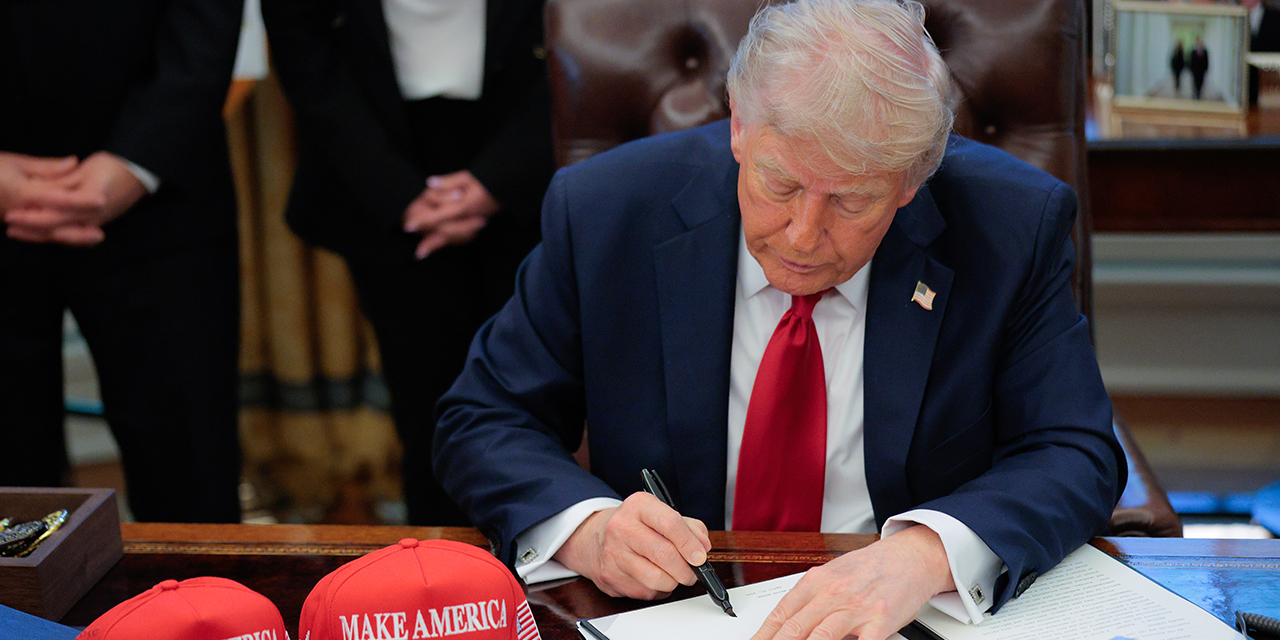
Measured in Trump time, it took them eons to get around to it, but the White House has finally taken the most important step it can to restore meritocracy to American society: eliminating disparate-impact theory from civil rights analysis and enforcement.
Disparate-impact theory holds that if a neutral, colorblind standard of achievement or behavior has a disproportionately negative effect on underrepresented minorities (overwhelmingly, on blacks), it violates civil rights laws. It has been used to invalidate literacy and numeracy standards for police officers and firemen, cognitive skills and basic knowledge tests for teachers, the use of SATs in college admissions, the use of grades for medical licensing exams, credit-based mortgage lending, the ability to discipline insubordinate students, and criminal background checks for employees and renters. It has been used to eliminate prosecution for a large range of crimes, including shoplifting, turnstile jumping, and resisting arrest; to end police tactics such as proactive stops (otherwise known as stop, question, and frisk); and to purge safety technologies like ShotSpotter and speeding cameras from police departments.
Finally, a reason to check your email.
Sign up for our free newsletter today.
In none of those cases has it ever been demonstrated that the disfavored standard was implemented to exclude blacks or other minorities from a position, opportunity, or right. The genius (if a diabolical one) of disparate-impact theory was that it obviated any need to show discriminatory intent on the part of a targeted employer or institution. Discrimination was inferred simply by the effect of the colorblind standard.
Disparate-impact theory preserved the hegemony of the civil rights regime long after the original impetus for that regime had all but disappeared. One would be hard-pressed today to find any mainstream institution that discriminates against blacks in admissions, hiring, or promotion. The reality, in fact, is the opposite: every mainstream institution is desperate to hire and promote as many remotely qualified blacks as possible; it is white males who are disfavored and excluded from positions based on their skin color.
If those black-welcoming institutions continued to employ a single standard of achievement, and that standard disqualified blacks at a disproportionate rate, civil rights enforcers would declare that they had uncovered yet another redoubt of white supremacy. The diversity bureaucracy in universities and the corporate world would send out the message that blacks continue to face discrimination at every turn and that they should take refuge in a victim identity.
Disparate-impact analysis was the linchpin of the “systemic racism” argument, since the only present-day proof of racism in American society is the underrepresentation of blacks in the professions and their overrepresentation in the criminal-justice system.
Meantime, the real cause of disparate impact—the yawning academic skills and crime gaps—was kept assiduously offstage.
Now all that may be changing. The presidential Executive Order of April 23, 2025, “Restoring Equality of Opportunity and Meritocracy,” sets out the policy of the United States to “eliminate the use of disparate-impact liability in all contexts to the maximum degree possible.”
To that end, it starts the process of repealing disparate-impact regulations accreted to the Civil Rights Act of 1964 by subsequent administrations and requires the cataloguing of state laws that impose disparate-impact liability, among other actions.
Most momentously for law enforcement, the executive order initiates the review of federal consent decrees that rely on disparate-impact analysis (i.e., almost all of them), with the implied goal of dissolving those decrees. (A consent decree is a negotiated settlement, overseen by a judge and his representative, binding a government entity to an elaborate set of reforms.) Dissolving such decrees will not only liberate police departments from a costly yoke of superfluous red tape but will also defund the federal monitor racket, whereby monitors earn millions of dollars declaring for years on end that the overseen police department has yet to comply punctiliously with an average of 200 or so mandated reforms, often regarding paperwork.
Left-wing groups are understandably up in arms. They charge the administration with a “fundamental shift in legal philosophy.” That is true, but it was disparate-impact theory itself that constituted a radical departure from the premises of the Civil Rights Act of 1964. President Donald Trump merely restores the 1964 law to its original understanding. That pioneering legislation banned intentional discrimination only; disparate-impact theory was a judicial amendment made six years later in response to how, even in 1971, finding invidious intentional discrimination was becoming too difficult to satisfy the advocates.
The Left complains as well that Trump’s’ executive order embraces a “formalist, colorblind conception of equality.” Yes—and so does the Constitution.
President Trump and his Cabinet must move quickly. His executive order can be reversed by a hostile successor administration; the disparate-impact regime can be resurrected with another flip of the presidential pen. The White House needs to persuade Congress to clarify that civil rights mean freedom from discrimination—not the legitimization of “reverse discrimination.” Congress must amend 1960s-era statutes to confirm explicitly their original colorblind intent.
Such a process of congressional clarification will trigger a long overdue debate: Is the United States still disfigured by systemic racism that requires the dismantling of meritocratic standards? Or are we ready to live in a nation where we can be confident that the doctor who walks through an emergency room door is there because of his medical expertise, not his race?
Photo by Chip Somodevilla/Getty Images
City Journal is a publication of the Manhattan Institute for Policy Research (MI), a leading free-market think tank. Are you interested in supporting the magazine? As a 501(c)(3) nonprofit, donations in support of MI and City Journal are fully tax-deductible as provided by law (EIN #13-2912529).
Source link















